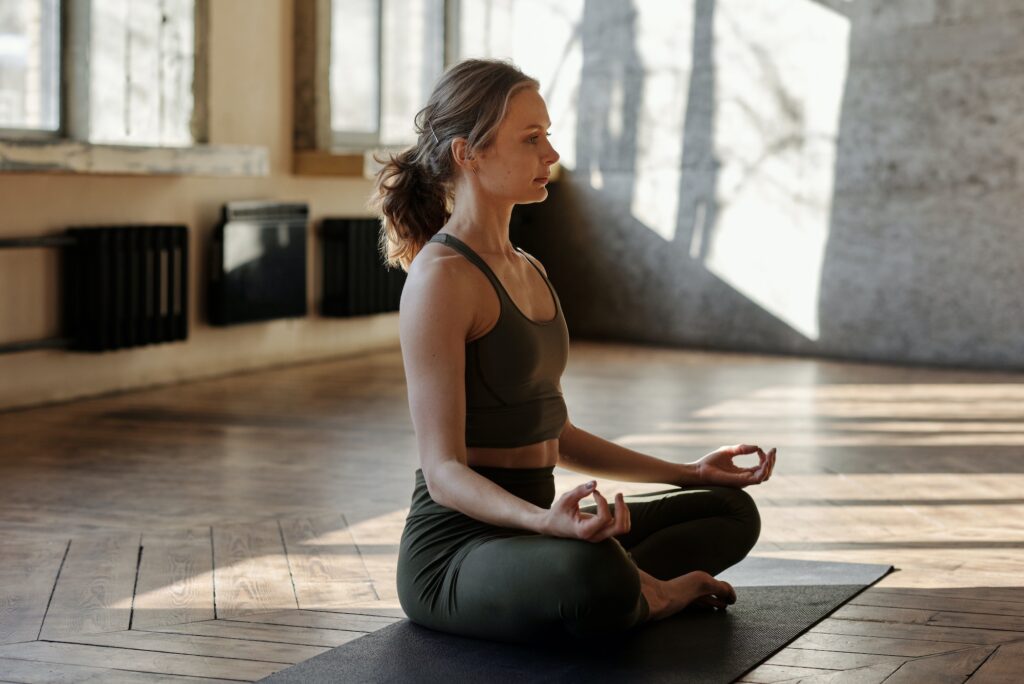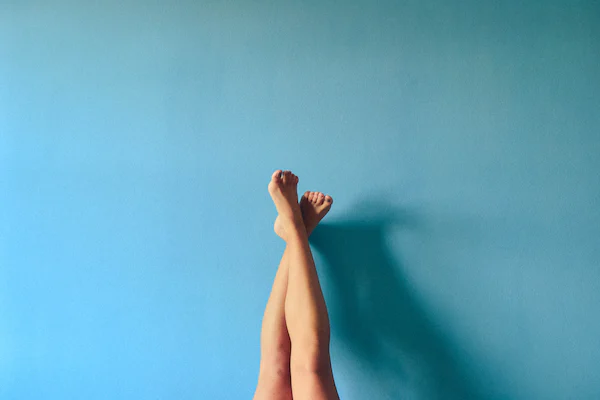
The anatomical differences between male and female hips are significant and play a crucial role in how each gender performs various physical activities, including exercise and yoga. These differences can influence flexibility, stability, and overall movement patterns. Here’s an overview of the key differences and their impact on exercise and yoga practices.
Anatomical Differences
- Pelvic Shape:
- Females: Women typically have a wider, more circular pelvis to facilitate childbirth. The angle of the pelvic bones is broader, leading to a wider hip structure.
- Males: Men usually have a narrower, more heart-shaped pelvis with a steeper angle.
- Q-Angle (Quadriceps Angle):
- Females: Women generally have a larger Q-angle due to their wider pelvis. This angle is formed by the line of pull of the quadriceps muscle relative to the patella and can influence knee alignment.
- Males: Men have a smaller Q-angle, contributing to different stress distribution across the knee joint.
- Femoral Neck Angle:
- Females: Women have a greater femoral neck angle, which is the angle between the femur and the femoral neck. This can lead to a higher risk of hip dysplasia but also contributes to greater flexibility.
- Males: Men have a smaller femoral neck angle, which can affect hip mobility and stability.
- Muscle Mass and Distribution:
- Females: Women tend to have more fat distribution around the hips and thighs, contributing to a lower center of gravity.
- Males: Men typically have more muscle mass and a higher center of gravity, influencing their balance and movement.
Impact on Exercise
- Flexibility:
- Females: Women often have greater hip flexibility, which can be advantageous in exercises requiring a wide range of motion. However, this flexibility can also lead to instability if not paired with adequate strength training.
- Males: Men generally have less hip flexibility, making certain movements like deep squats or lunges more challenging. Stretching routines are crucial to improve mobility and prevent injuries.
- Strength and Stability:
- Females: Women may need to focus on strengthening the hip abductors and adductors to support their wider hips and prevent knee injuries, particularly ACL tears.
- Males: Men might benefit from exercises that enhance hip stability and mobility, such as single-leg squats and hip bridges.
- Injury Risk:
- Females: Due to their wider hips and larger Q-angle, women are more prone to certain injuries like patellofemoral pain syndrome and hip bursitis.
- Males: Men may experience more groin injuries and hamstring strains due to tighter hip muscles and different loading patterns.
Impact on Yoga Overall
- Poses and Flexibility:
- Females: Women generally find it easier to achieve flexibility-oriented poses such as the pigeon pose, butterfly pose, lotus pose, and splits. However, they should be cautious of overstretching, which can lead to joint instability.
- Males: Men might struggle with flexibility in poses like the lotus pose or forward folds. Consistent practice and use of props like yoga blocks can aid in gradually increasing flexibility. Remember, you do not need to get fully into an Instagram worthy pose to get many benefits!
- Balance and Stability:
- Females: Women’s lower center of gravity can enhance stability in balancing poses such as the tree pose or warrior III. Strengthening exercises are essential to maintain joint health and prevent hypermobility.
- Males: Men may find balancing poses more challenging due to their higher center of gravity. Focus on core strength and gradual progression into these poses can help improve balance.
- Strength-Based Poses:
- Females: Women may need to work more on upper body and core strength to perform poses like the crow pose or chaturanga. Incorporating strength training into their routine can be beneficial.
- Males: Men often excel in strength-based poses but should be mindful of flexibility. Combining strength with stretching can create a balanced yoga practice.
How to Achieve a Beautiful Lotus Pose (Padmasana)
The Lotus Pose (Padmasana) is a classic seated yoga posture that symbolizes tranquility and groundedness. It’s not just visually stunning but also deeply meditative. However, achieving a beautiful Lotus Pose requires flexibility, patience, and proper technique to avoid injury.
Here’s a step-by-step guide to safely and gracefully enter the pose:
Preparation: Build Flexibility
Before attempting Lotus Pose, it’s essential to prepare your hips, knees, and ankles with poses that improve flexibility and mobility. Incorporate the following stretches into your practice:
- Butterfly Pose (Baddha Konasana): Opens the hips and inner thighs.
- Pigeon Pose (Eka Pada Rajakapotasana): Deepens hip flexibility.
- Seated Forward Fold (Paschimottanasana): Lengthens hamstrings and calves.
- Garland Pose (Malasana): Loosens the hips and stretches the ankles.
Step-by-Step Guide to Lotus Pose
-
Start with a Comfortable Seat:
- Sit on the floor or a yoga mat with your legs extended in front of you (Dandasana).
- Keep your spine tall and shoulders relaxed.
-
Cross One Leg:
- Bend your right knee, bringing your foot toward your left hip.
- Gently place the top of your right foot on your left thigh, ensuring the sole faces upward. Your heel should rest close to your lower abdomen.
-
Cross the Other Leg:
- Bend your left knee and carefully bring your foot over your right thigh.
- Place the top of your left foot on your right thigh with the sole facing upward. Your left heel should rest near your lower abdomen.
-
Adjust and Align:
- Ensure your knees are as close to the ground as possible without forcing them.
- Your ankles should feel supported, and there should be no sharp pain or discomfort.
- Keep your back straight, shoulders relaxed, and hands resting on your knees or in a mudra (e.g., Gyan Mudra with thumb and index finger touching).
-
Breathe and Hold:
- Close your eyes or maintain a soft gaze.
- Focus on deep, steady breathing to relax into the posture.
Tips for a Beautiful Lotus Pose
- Do Not Force It: Forcing your knees or hips into the pose can lead to injury. If you feel pain, stop and work on preparatory poses.
- Use Props: Sit on a folded blanket or cushion to elevate your hips, making it easier to externally rotate your legs.
- Practice Gradually: Start with Half Lotus Pose (Ardha Padmasana)—placing only one foot on the opposite thigh while the other leg remains under the opposite knee.
- Engage Your Core: A strong core supports your spine and helps maintain an upright posture.
- Consistency Is Key: Regular practice of hip-opening poses will make Lotus Pose more accessible over time.
Benefits of Lotus Pose
- Improves Flexibility: Opens the hips, stretches the knees, and increases ankle mobility.
- Promotes Relaxation: Encourages calmness and stability, ideal for meditation and pranayama.
- Enhances Posture: Strengthens the spine and encourages alignment.
- Stimulates Energy Flow: Said to activate energy centers (chakras), especially in the lower body.
Common Mistakes to Avoid
- Knee Strain: If your hips aren’t flexible enough, your knees may bear the strain. Never push your knees downward.
- Slouching: Keep your spine tall to avoid compressing your back.
- Ignoring Pain: Distinguish between discomfort and pain—stop immediately if you feel sharp or pinching sensations.
When Lotus Pose Isn’t Safe
Avoid Lotus Pose if you have:
- Recent or chronic knee, ankle, or hip injuries.
- Severe joint stiffness or arthritis.
- Acute lower back pain.
In these cases, consult with a yoga instructor for modifications or alternatives, such as Easy Pose (Sukhasana) or Half Lotus Pose.
With dedication and mindful practice, you’ll gradually develop the flexibility and strength needed for a beautiful Lotus Pose. Enjoy the journey and embrace the meditative stillness this iconic posture offers!
For More Information: Research Insights
Research has shown that these anatomical differences significantly influence movement patterns and injury risks:
- A study published in the Clinical Orthopaedics and Related Research highlights the increased Q-angle in women and its impact on knee and hip mechanics, suggesting targeted exercises to mitigate injury risks .
- Research from the Journal of Orthopaedic & Sports Physical Therapy indicates that gender-specific training programs can enhance performance and reduce injury prevalence in activities like running and jumping .
- A review in the Journal of Yoga & Physical Therapy discusses the implications of hip anatomy on yoga practice, emphasizing the need for individualized approaches to accommodate different flexibility and strength levels .
Conclusion
Understanding the anatomical differences between male and female hips is crucial for optimizing exercise and yoga practices. By tailoring routines to address these differences, individuals can enhance performance, prevent injuries, and achieve a balanced, effective workout regimen. Whether you’re a man seeking greater hip flexibility or a woman aiming for more stability, recognizing and working with your body’s unique structure is key to a healthy, sustainable fitness journey.
Sources:
- Hormonal changes in menopause and the effect on the female hair cycle: a review of the literature
- Additional research on Q-angle and its impact on knee and hip mechanics.
- Studies on gender-specific training programs for injury prevention and performance enhancement.
- Reviews on the implications of hip anatomy on yoga practice.

